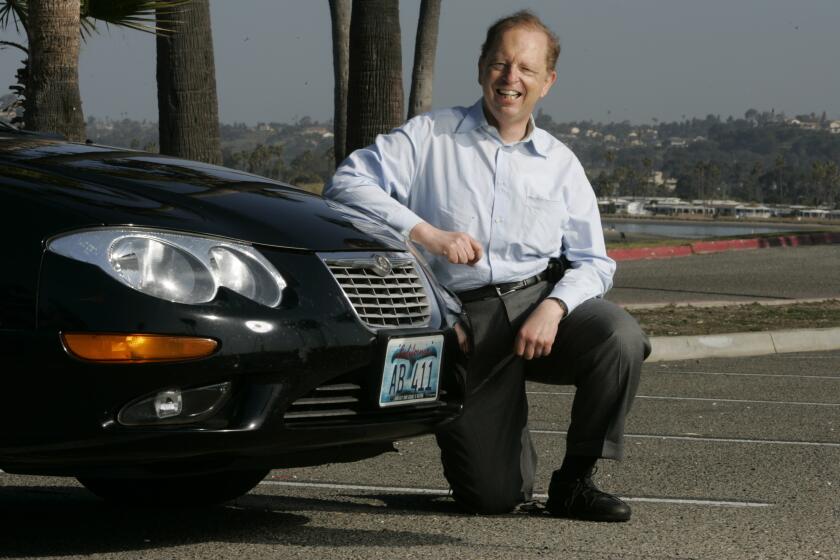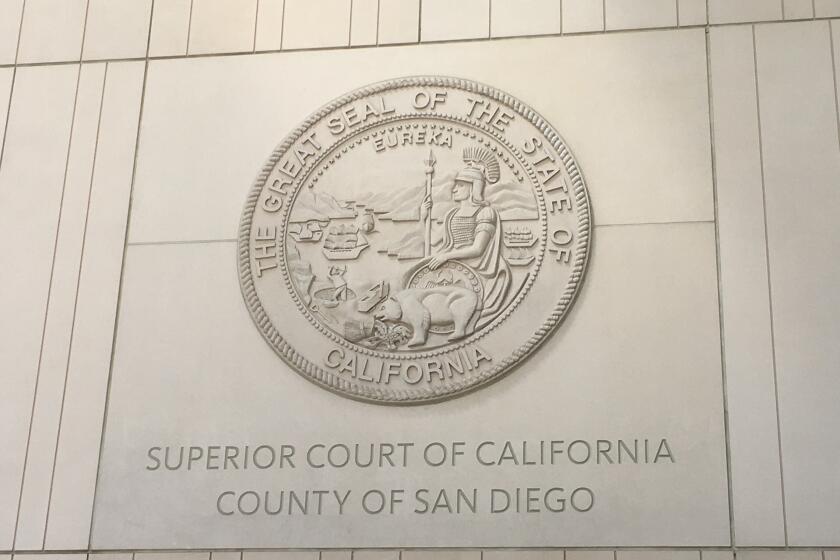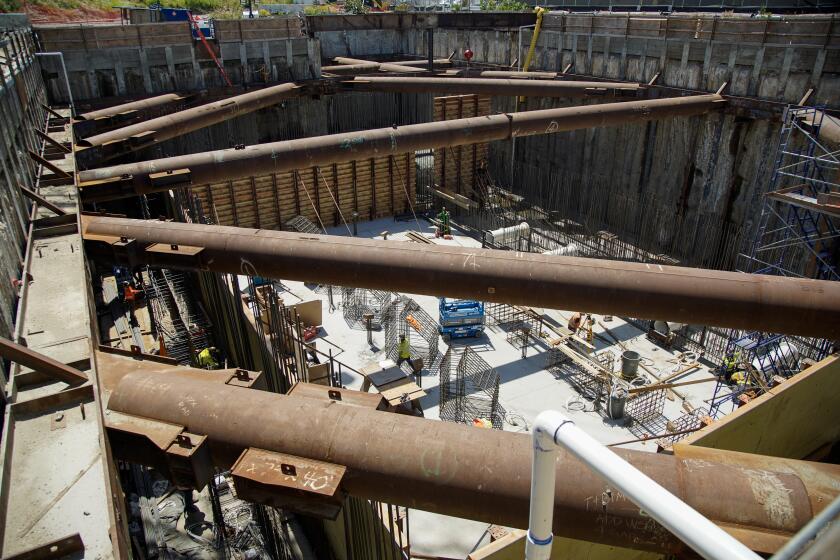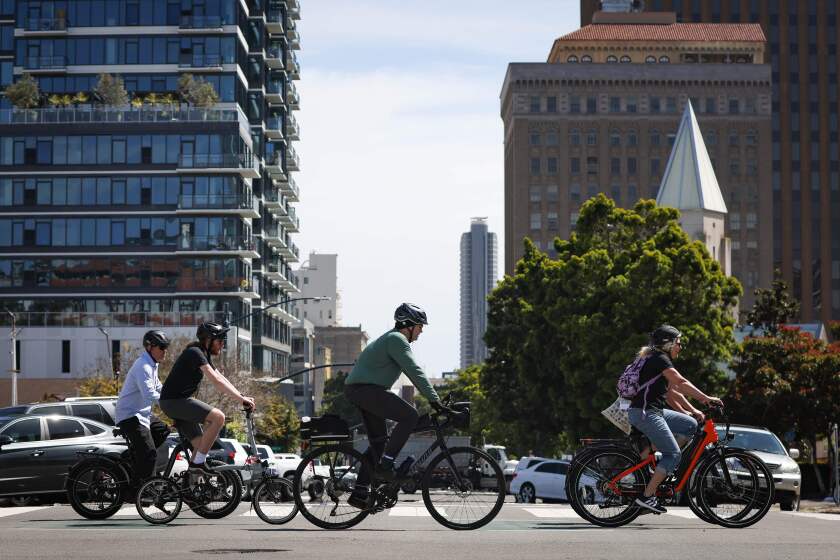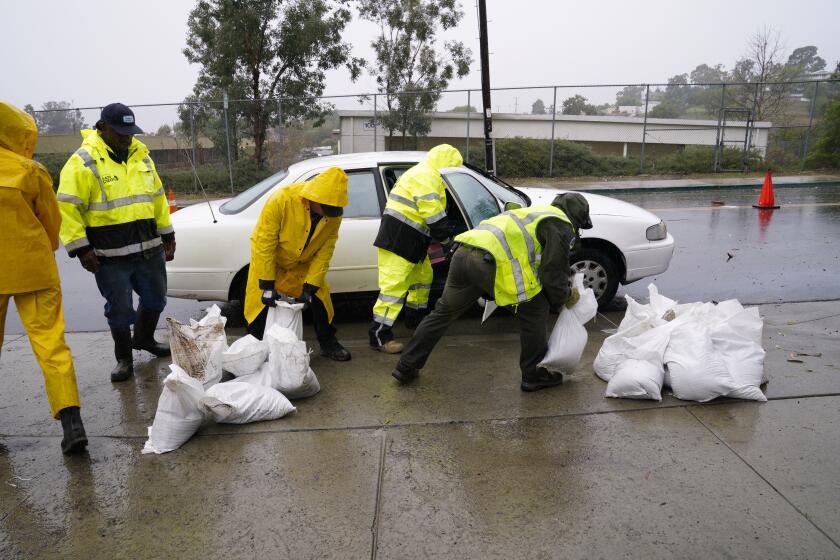Chargers measure fiscally sound — if estimates are accurate
San Diego’s independent budget analyst says the Chargers proposed hotel tax hike would generate enough money to cover the team’s projected price tag for a combined stadium and convention center annex, but that the proposal may be underestimating those costs.
In a report released Monday about the team’s Nov. 8 ballot measure, the budget analyst also says that low hotel tax revenues in a particular year could prompt the city to cover project-related expenses with money normally used for public safety and other core functions.
CHARGERS STADIUM: COMPLETE COVERAGE
Meanwhile, a separate analysis by the San Diego County Taxpayers Association released Monday says projected revenues from the Nov. 8 ballot measure would fall more than $400 million short of what’s needed.
That analysis, which the Chargers immediately called biased and “rubbish,” says the projected shortfall would force the city to either contribute the missing money or risk its credit rating and reputation.
The independent budget analyst, Andrea Tevlin, estimates the team’s proposal to raise San Diego’s hotel tax from 12.5 percent to 16.5 percent would generate $120 million in additional revenue annually.
While $20 million would be diverted to tourism marketing each year, the remaining $100 million would be enough to sell bonds that would generate between $1.3 billion and $1.6 billion in capital.
That money, combined with a $650 million contribution from the Chargers and the NFL that the team proposes, would put the capital available somewhere between $1.95 billion and $2.25 billion – and somewhere between $150 million and $450 million above the Chargers $1.8 billion estimate.
Tevlin, however, says that the $200 million for land costs included in the $1.8 billion estimate could be too low.
She notes that the city must replace 1,300 Padres parking spots on the proposed site of the project, which could cost about $75 million, and relocate the Metropolitan Transportation System’s bus yard from the rest of the site.
In addition, Tevlin says moving the bus yard could include environmental remediation, and that the project may require upgrades to nearby trolley lines to handle a greater volume of riders.
Tevlin also says bond financing costs could be higher than anticipated if interest rates rise, which would reduce the amount of money that could be borrowed against the stream of higher hotel tax revenue.
Chargers spokesman Fred Maas has said the team’s plan would raise hotel taxes enough for there to be a large financial “cushion” for cost increases.
He has also stressed that financial models used by the Chargers include two notable recessions over the 30 years of bond repayments, one similar to the recession after the 9/11 terrorist attacks and another as large as the Great Recession that began in 2007.
The plan also includes creation of a reserve to cover bond payments and operating and maintenance expenses during lean tourism years.
But Tevlin says there still may be individual years where the revenue stream from higher hotel taxes, or “transient-occupancy taxes,” isn’t sufficient.
And she says the city, while not required to do so, could consider covering any shortfall from its operating fund, or general fund.
“If TOT revenues can’t cover stipulated requirements in a given year, general fund support may be necessary, reducing funding available for other public purposes,” Tevlin says in her report.
The separate analysis from the taxpayers association is more negative about the Chargers proposal, which will appear on the ballot as Measure C and requires approval from two-thirds of voters for passage.
The taxpayers’ analysis says the Chargers measure includes “unacceptable” and “significant” risks.
That’s based on an estimate that the proposed hotel tax increase would generate only $744 million, $406 million less than the $1.15 billion needed.
The analysis says combining the $650 million from the Chargers with that $744 million would provide just under $1.4 billion.
The Chargers have said investors won’t buy the bonds if revenue estimates are too low, and that the bond buyers, not the city, would be on the hook if revenues don’t end up being sufficient.
But Haney Hong, the association’s chief executive, said the city would probably still be compelled to cover the shortfall even without a legal requirement to do so.
“The city would have the precarious choice of either defaulting on the debt or paying it back from the general fund,” said Hong. “If the city were to default it would be a major blow to its credit rating and would increase interest rates for future borrowing.”
The analysis also says the Chargers measure compared unfavorably with the deal the Padres struck with the city in the 1990s for Petco Park. It notes that the Padres guaranteed $300 million of private investment for redevelopment and rent payments that increase with inflation.
The analysis also complains the proposal doesn’t explicitly describe any revenue sharing between the Chargers and the city, doesn’t include an independent oversight panel and wouldn’t help the city cover the remaining debt on Qualcomm Stadium when the Chargers stop playing there.
In addition, it says moving the bus yard would lengthen several routes and possibly force fare increases.
Fred Maas, the Chargers spokesman, was harshly critical of the taxpayers analysis and the association’s board for voting last Friday to oppose the Chargers ballot measure.
“I would call this vote and report rubbish, but it would be an insult to the hard working refuse collectors in San Diego,” said Maas, contending the financial part of the report “couldn’t pass for a third-grade arithmetic homework assignment.”
Maas also said the analysis was biased against the Chargers because some leaders of an opposition group called “No Downtown Stadium” are on the taxpayers association board or have strong ties to the organization.
They include association board members Lani Lutar and April Boling, and City Councilman Chris Cate, the association’s former vice president.
Maas also suggested those three and No Downtown Stadium spokesman Tony Manolatos improperly used their access to the association’s e-mail list to send association members attacks of the Chargers plan.
Hong said he wouldn’t respond to the comment about third grade arithmetic because he didn’t want to go “back and forth” with the Chargers.
On the e-mails, he disputed the suggestion by Maas.
“No one has access to our email listing other than the staff at the taxpayers association,” Hong said. “This is an independent analysis in the best tradition and legacy of the taxpayers association.”
Supporters of the Chargers measure have suggested that many of those in opposition are connected to the local hotel industry or influenced by it.
Hong stressed that no members of the association board are part of the hotel industry and said the board acted completely independently.
“It’s naive for anyone to presume that one person or one industry or one anything would have complete and utter sway over the taxpayers association,” he said.
RELATED

Chargers release their vision for stadium

